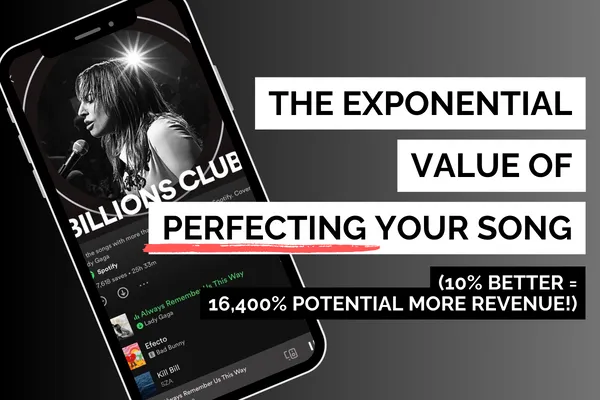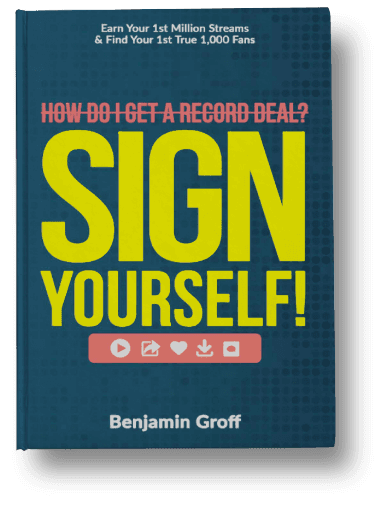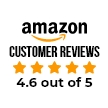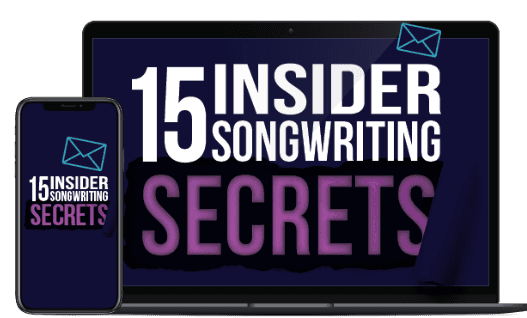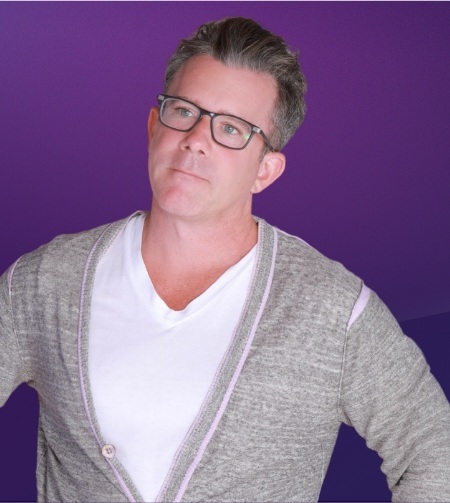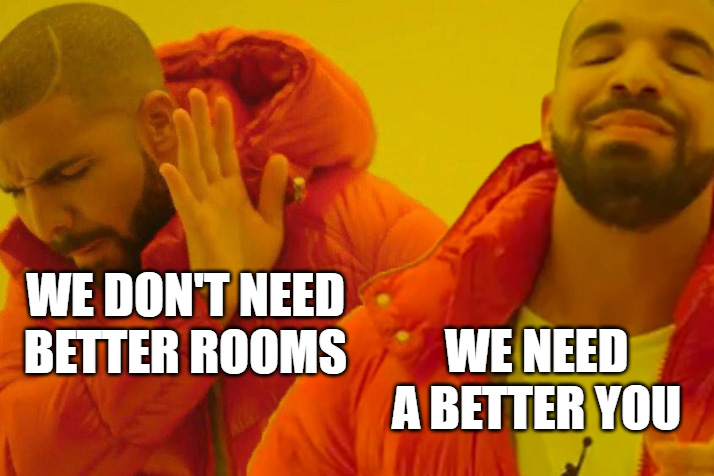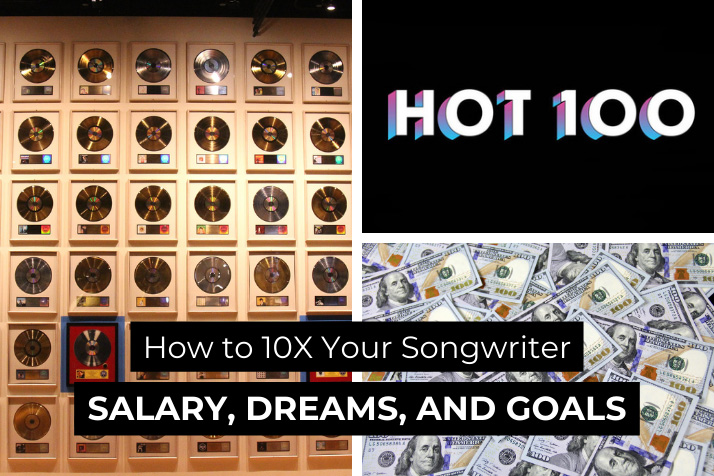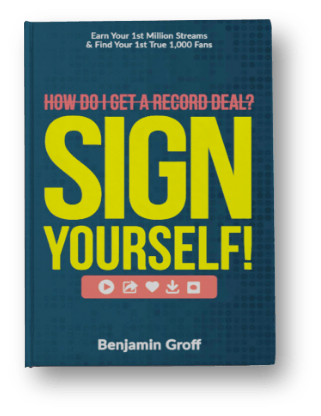In a previous article, “10X Is Easier Than 2X,” we explored an interesting concept. Which is – improving and perfecting your song by just 10% and even getting that level of quality to the final 1% can have a massively profound impact on your song’s success.
Thus, this philosophy my own publishing clients have been hearing as a new mantra: 10% = 100X.

So here I was thinking: “Yeah, that’s a pretty nifty and catchy phrase: 10% = 100X.” And, yeah, I know 10%=100X might be a bit of an exaggeration. And also, I don’t want to get emails saying, “Hey Benjamin, I put in an extra 10% on every song – where are my hits?”
Not every song you write will demand this extra attention. We’re talking about applying this concept to the songs where you’re potentially on top of a hit!
So, work with me here.
If you can make your potential hit just 10% better – could a 10 million streaming song turn a billion streaming song? You bet. Keep reading, and I’ll show you how that’s an absolute possibility.
But first, so we’re all on the same page – what are the multiple factors that could trigger this 100X + meteoric rise?
First, we need to keep in mind where we’re at today within the general music marketplace. Literally, we have 750,000 to 1 million music releases per week (not an exaggeration). So, what happens when your song is just 10% better than everyone else’s? That’s right. What happens when your song stands out just 10% better from the pack and you can “catch fire” with your new song?
Let me hypothesize:
A song that’s 10% better could be the key to securing your track on a top playlist, getting featured in a TikTok by an influencer, or being chosen by a music supervisor for a film or TV series. These opportunities can then compound, leading to more exposure for your song, more playlisting, more fans discovering the music, more UGC content, etc…all contributing to exponential growth and success.
Let’s look at this chart below and review the potential compounding effects of 10% = 100X.
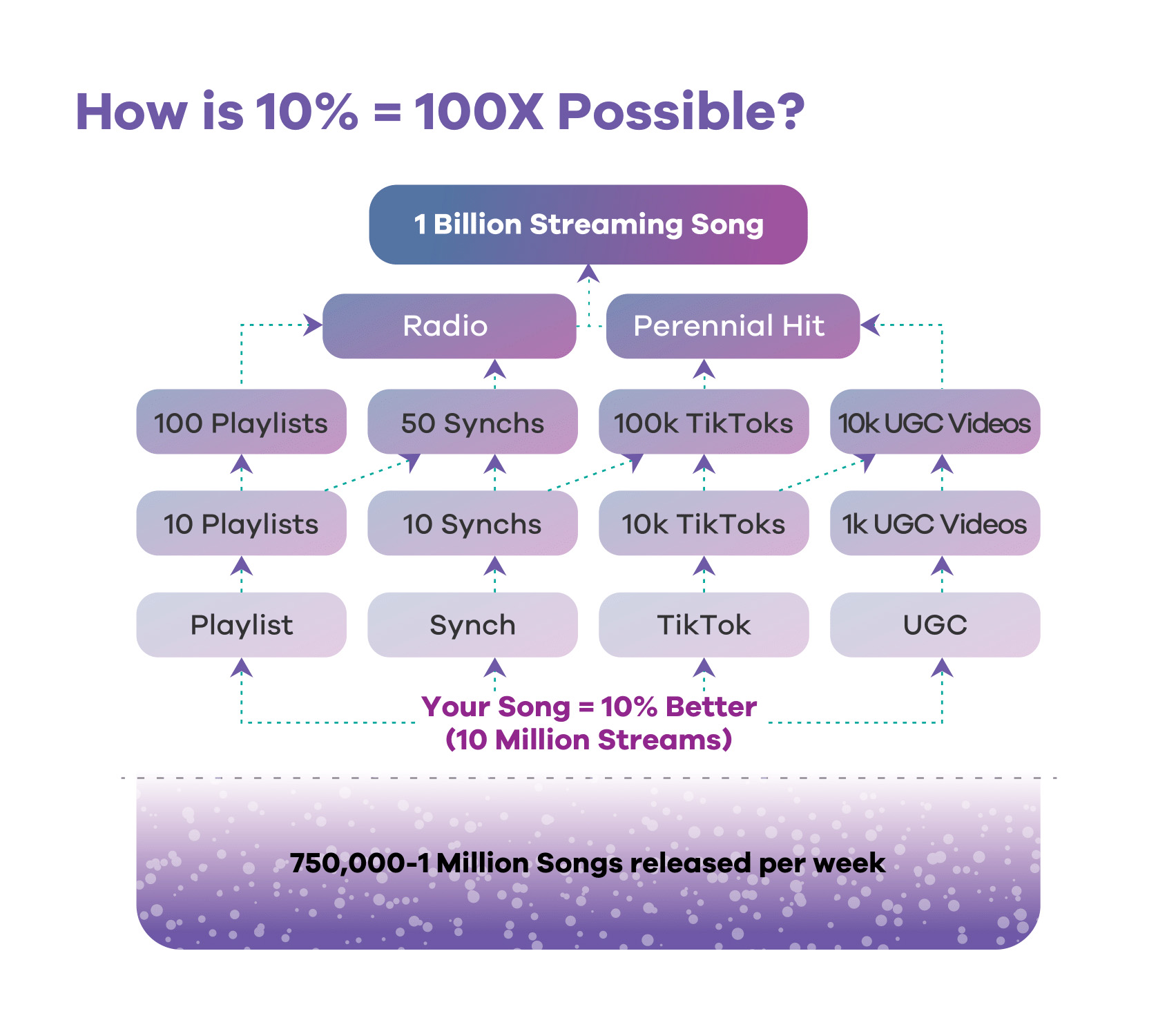
Does that make sense? If you can stay with me here on this concept, prepare for a significant revelation. Like really – your mind’s about to be blown.
Because it turns out that I was completely wrong in the 10%=100X hypothesis. Looking under the hood further, 10% = 100X is actually a low estimate.
When I analyzed and did the math – it completely shifted the focus of my own business, and I expect it to do the same for your songwriting approach.
While a 10% improvement might hypothetically take a song from 10 million to 1 billion streams, it doesn’t directly translate to earning 100X more revenue. Oh no, it’s much, much more than that! Why, you ask?
Because a song with 10 million streams just doesn’t earn the same relative performance royalties (i.e. radio, airplay, etc.) or synchronization royalties (i.e. film/TV licenses, etc.) as a song with 100 million or 1 billion streams.
It’s weighted COMPLETELY differently. Because (I hate to break the news to you), 10 million streams on your new song may sound nice, but in the grand scheme of things, it’s kind of “meh.”
Let’s examine some realistic figures, keeping in mind this is a rough estimate.
For simplicity, let’s say from a songwriting and publishing royalty perspective, that every 1 million Spotify/Apple streams is worth approximately $1,000 USD. This includes minor performance royalties, additional streaming across various platforms, and the occasional small synchronization license.
Also for the sake of simplicity, we’re going to base our calculation from just 1 song that you’ve written entirely 100% by yourself. No need for any of those pesky co-writers.
In the graph below, we’re going to say your “Pretty Good Song” is equivalent to 10 million streams. And we’ll call your “Song That’s 10% Better” equivalent to 1 billion streams (and hey, just work with me here and roll with it).
Let’s examine the numbers.
|
“Pretty Good” Song |
Song That’s 10% Better |
|
10 Million streams |
1 Billion streams |
|
Streaming Value: Approx $10,000 |
Streaming Value: Approx $1 Million |
|
Total: $10,000* |
Total: $2 Million** |
*Streaming count/value assumes this is a “decent” song but did not garner synchronizations or radio play, etc.
**Streaming count/value assumes this is a hit and has robust performance and synchronization revenue (note: this is probably on the low side).
This concept is indeed intriguing. If we accept the potential that a song improved by a mere 10% can generate 100 times more streams, we have to keep in mind that the actual value increase will be far more exponential.
This means that a 10% improvement in your song could potentially make your song 200X more valuable! Holy cow! To put it in perspective, a song earning $10,000 has the potential to jump to $2,000,000 due to this 10% improvement. This represents a staggering 19,900% increase in value.

And while the above meme is a pretty fun one – diving into all that cash – it’s just not all about money, right? This is about your value, your art, your legacy, what you have to write and say to put out into the world and whom your song can reach. So, embracing this practice, can we take your artistic and songwriting profile and your message even bigger? Yes we can.
10% = 19,900%!
But we’re just getting started. The 10% extra you might put into a song creates way more value than you can imagine. And this is an understatement. Why?
We haven’t yet considered the cumulative effect of adopting this mindset and approach across even a small catalog of your songs. That’s right, not just one song.
What happens if we apply this approach to even a small catalog of say, 10 compositions?
For the writer or artist who understands and applies this 10% principle, the compounded benefits can be extraordinary. No, I’ll say it another way: Undeniably mind-melting. As you’ll see, this is why it’s so important for you to embrace this approach.
So, work with me here and let’s dive deeper into the perspective of a writer or artist who adopts this 10% = 19,900% mindset.
Let’s take a look at this from the perspective of not just one song, but witness the compounding effects of this approach with a small catalog of 10 songs. Again, for ease of calculation, let’s assume that this writer has written each of these songs 100% entirely themselves.
Continuing with this scenario, let’s also assume that within this catalog of 10 songs, two of them have become 1 billion streaming songs, and the remaining eight songs, each achieve 100 million streams.
|
10 “Pretty Good” Songs |
10 Songs That Are 10% Better |
|
Each song = 10 Million streams |
2 songs = 1 Billion streams (2 hits) 8 songs = 100 Million streams |
|
Value per song: Approx $10,000 |
Value for 2 x 1 Billion streaming songs: Approx $4 Million Value for 8 x 100 Million streaming songs = Approx $1.5 Million |
|
Total: $100,000^ |
Total $5.5 Million^^ |
^Streaming count/value assumes these are “decent” songs but did not garner synchronizations or radio play, etc.
^^Streaming count/value assumes two songs are hits and have robust performance and synchronization revenue (note: this is probably on the low side).
The key takeaway is the transformative power of shifting and striving for that additional 10% in quality. It’s about understanding the journey from good to GREAT requires persistent effort, “overturning every stone” in your song and production and looking for that extra 1% and a commitment to excellence.
By adopting this mindset, a writer or artist doesn’t just improve one song; they elevate their entire catalog and the songs they’re writing today, potentially reaping rewards far exceeding the sum of their parts!
So, what exactly is this mindset and identity that equates to a 10% improvement yielding a 19,900% increase in potential value?
Here’s a thought. Can you rewrite your own personal songwriting story and identity to embrace the following?
That being said, let’s jump back to those earlier calculations. In that scenario, we were comparing your 10 “meh” songs generating $100,000 in royalties to your 10 awesome songs creating $5.5 million, which represents a 5,400% increase in earnings.
You gotta be kidding me, right?!
But we’re not finished! Oh no, not by a long shot. And this is where things become truly fascinating and exponentially impactful. If I haven’t grabbed your attention before, I’m about to now.
Stay up to date on must read, new articles, courses and special offers.
Sell my publishing catalog you say? That’s right. It happens all the time. There are companies, hedge firms, pension funds, other publishing companies, etc. who look to buy great songs and catalogs, which have a predictable and robust earnings track record (note that these firms are not interested in buying mediocrity).
Let’s explore this further.
The purchaser of a catalog will generally examine the NPS (Net Publisher Share, this is often/usually 25% of the entire value of the song) and then calculate a “multiple” on top of that number. If a sale is a 5X multiple, for simplicity that means the purchaser is willing to pay for five years of your future income. For “big” catalog deals that have been in the news, i.e. Sting, Bob Dylan, etc., the multiples on those catalogs are, I’m sure, at least 20X.
And why would someone pay so much for those songs? Because they are historical hits! That’s why!
So, let’s do a catalog analysis of the above small 10 song catalog. You know, the one with 10 “meh” songs, and the other with 10 real copyrights. What would happen if you were to sell?
First, we have to be realistic on who would actually want to buy a catalog of 10 “pretty good” songs – and ones that have probably run their course. These songs aren’t hits and they’ll be mostly forgotten about in a year (if not sooner). Like, really, how much more royalties are there to squeeze out of that “pretty good” song?
We have to consider that in as short as five years, these songs may have very little value, or may be close to worthless (sorry). Remember we have a million songs coming out per week now competing for our attention.
But for sake of argument, let’s say someone might pay you a multiple of 5X for these 10 “pretty good” songs. Remember, this is a scenario where each song has streamed 10 million times. This is how this might look.
|
10 “Pretty Good” Songs (Based on 100%) |
|
Each song (10) = 10 Million streams |
|
Value per song: Approximately $10,000 |
|
Total: $100,000 NPS (Net Publisher’s Share): $25,000 NPS ($25,000) x a multiple of 5X = $125,000 |
It’s important to note that the buyer is essentially investing in the future earnings of these songs. This scenario of $125,000 paid to you, as the songwriter, might seem somewhat underwhelming. However, I apologize, but really, no one cares about these tunes!
Consider our alternative example. You know the amazing catalog of 10 robust songs, where 2 of these songs are blockbuster hits (each with 1 billion streams), and the remaining eight are very strong performers (with 100 million streams each).
This catalog represents not just hits, but what could also be described as “perennial” songs. Within the catalog, these 2 hits are undoubtedly continuing to generate substantial revenue. Additionally, the eight songs with 100 million streams each will also keep earning substantially via continued streaming, synchronization, playlist placements, and revenue from user-generated content (UGC).
Don’t forget, this also includes revenue from cover versions or samples of these songs, each generating its own separate robust streams of royalties!
The 2 hits in this catalog could retain significant value for decades. And the 8 other songs still have a way to go. They may even become real hits themselves! We just can’t deny that there are significant fans for these songs. Also with continued users in the digital space along with Wi-Fi reaching every corner of the planet – simply put, these songs hold fantastic future value.
So, for the purposes of this exercise, let’s assume a buyer is willing to pay a 15X multiple for this aforementioned catalog.
As you can see…this is starting to get very interesting.
Let’s see what that would look like.
|
10 Songs (Based on 100%) That Are 10% Better |
|
2 songs = 1 Billion streams (2 hits) 8 songs = 100 Million streams |
|
Value for 2 x 1 Billion streaming songs: Approx $4 Million Value for 8 x 100 Million streaming songs = Approx $1.5 Million |
|
Total: $5.5 Million NPS: $1,375,000 NPS ($1,375,000) x a multiple of 15X = $20,625,000^^ |
$20,625,00.
Do I have your attention now?
Are you with me?!
This represents a staggering difference of 16,400%.
To summarize, in our first scenario with just “OK” streaming songs, the potential publishing sale value (assuming someone is even interested in buying it…good luck!) might be around $125,000. However, in the second scenario, where the 10 song catalog includes 2 hits with 1 billion streams each and 8 robustly streaming songs with 100 million streams each, the sale value dramatically increases to $20,625,000.
Which sandbox do you want to play in? A catalog worth $125,000 or one worth $20,625,000?
Thus, my postulation that 10% = 100X in the actual, grand scheme of things is exponentially incorrect!
The correct formula is more like 10% = 16,400% (or to simplify 10% = 165X).
Where Does the Extra 10% Come From?
Now hopefully at this point, I’ve got you hooked. Yes! You’re now enrolled in the 10% = 165X concept. You get it. Great! But on the other hand – You might be asking yourself “Where can that 10% extra come from? This is already the best I can do!”
Well luckily for you, I put some thought into this, and below are some ideas to implement for that extra 1-10%.
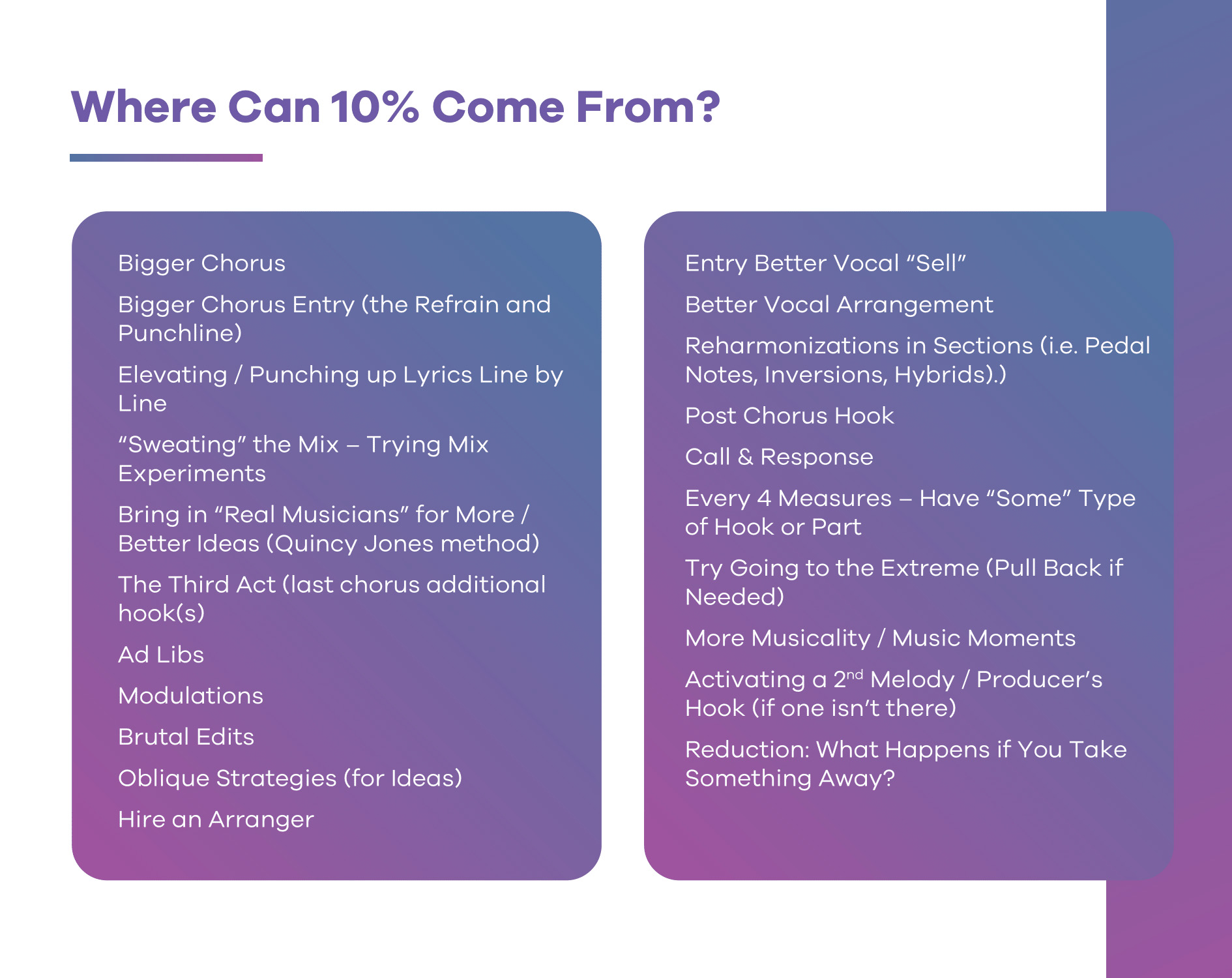
And this is just a starting point! What other ideas can you add to this list?
The 10% Ask – Get Excited About This
So, if your publisher, co-writer, A&R, or manager is requesting more work on your song, has provided feedback, and is enthusiastically urging you to refine it and take it to the finish line…this is a positive sign! Embrace it! Do it! Run towards the light! : ) You might be “on top of the gold!”
That’s right. Instead of being “bummed” or having low energy about rewrites and sacrificing the short term appeal of writing a new song (i.e. what I call just “digging another random hole in search of “lost treasure”), adopt the mindset of the following.
“Hell yeah! Great! I must be really onto something special because my team is invested in my success and pushing me to excel. I’m on ‘top of the gold’ and creating my huge future!”
When your publisher, co-writer or manager gives you feedback that they LOVE the song but it’s “not quite there yet,” it’s your new duty to respond with a proactive and exciting, “Hell yeah! I’m on it!”
Consider not adding any “new” writing sessions until your potential hit is done! And I mean 100% done. You already have the gold – so now, you just have to fiercely get after it. This is say, versus scheduling a new (and maybe even a random) co-write.
Remember this when your co-writers or publisher encourage you to meet the standards of your future self and what you and the song deserves.
The fact is (and let’s look at this another way) most people settle for taking their songs to about 85-90% of their potential.
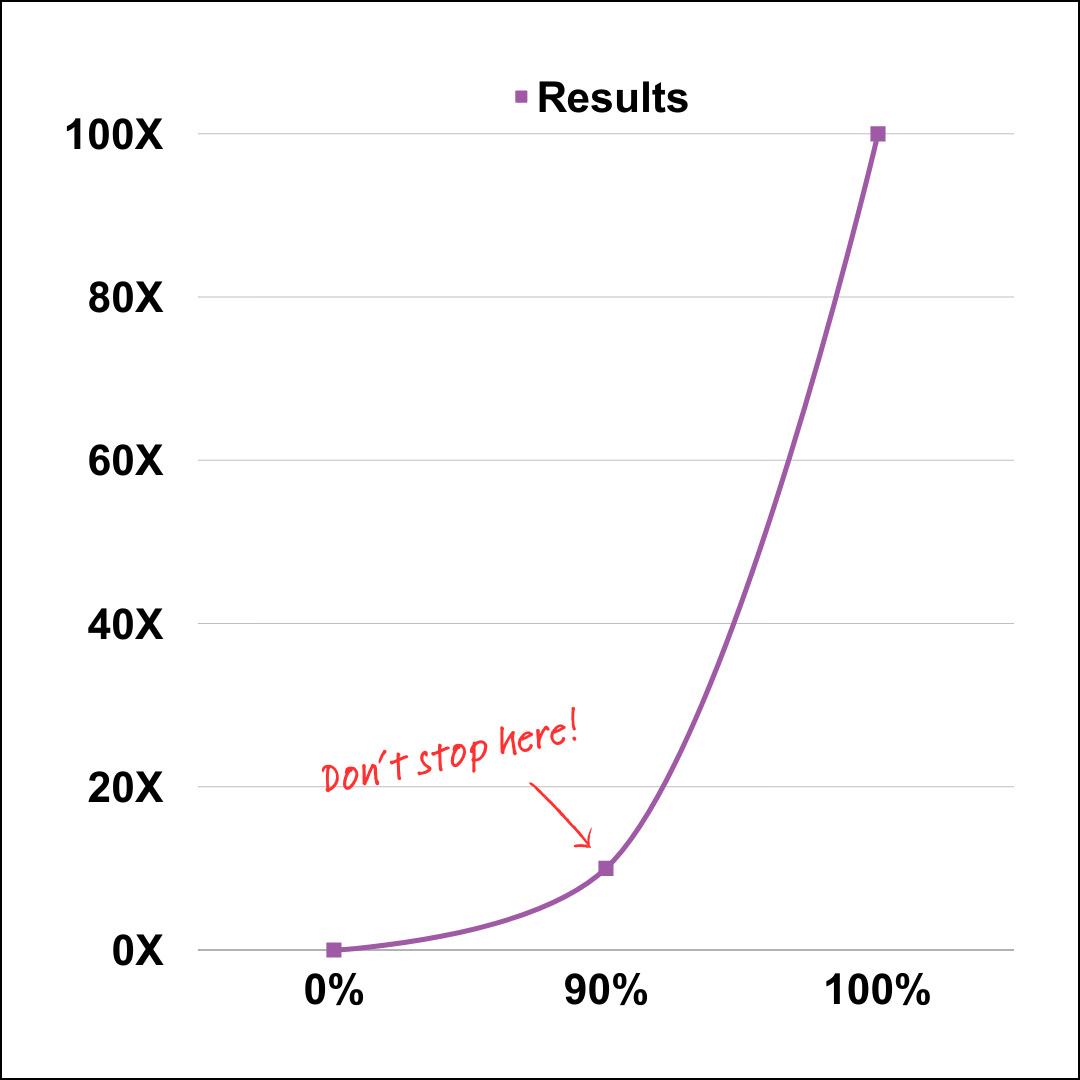
Let’s not have that person be you. You’re a 100% / getting the song to the finish line type of writer.
But surprise! We’re still not done! The value of pushing for that extra 10% goes even further.
If you succeed in crafting a hit song today, it puts you one step ahead in the industry and way in front of all your colleagues. This amplifies your cache within the music business – thus the phone starts ringing off the hook. Having a hit cuts you directly to the front of the line, placing you in those next level “rooms” you wish to write in. In other words “premium opportunities are multiplied.”
It’s a cliche in the music business that we’re all just “one hit away!” Yet it’s the truth. We all know what that means.
And what’s the value of that? The actual and perceived value of being a hit songwriter RIGHT NOW? It’s PRICELESS! It’s cutting out YEARS of time, and getting you to your dream reality 3-5 years faster.
This is simply something we cannot measure. Both in real value, but also your own self-worth and escaping what I call the “grind orbit.” It’s also embracing your own self worth, happiness, momentum and JOY.
Again, this is PRICELESS.
Are you with me, still?
Knowing Where the 10% Is?
A key point to understand is that the concept isn’t simply about exerting an additional 10% effort arbitrarily. It’s about strategically determining where to direct that extra effort and identifying areas in need of improvement or enhancement.
Consider the story of Henry Ford, which highlights the importance of knowing exactly where to focus one’s efforts. When Ford’s production line malfunctioned, and numerous attempts to fix it failed, Ford sought help from an expert he trusted. This expert resolved the issue in an hour, subsequently billing Ford $10,000—a huge sum in the early 1900s!
Ford questioned the price of the bill for an hour of work and for what Ford called “tinkering,” The expert explained: “Mr. Ford, the charge is $10 for my hour of work and $9,990 for knowing precisely where to work tinker.” To this, Ford conceded, acknowledging the value of targeted expertise.
Similarly, when applying effort to a song, it’s crucial to know where to place your 10% efforts. How do you do that?
First, I would recommend setting the song aside for a week or two and come back to it with completely fresh ears. Secondly, I would consider listening to your song IN FRONT OF other people. Your perspective will dramatically change.
Lastly, this is where the guidance of a skilled publisher, manager, objective co-writer, or a musician friend becomes invaluable. They can shed light on specific areas to focus your 10% extra effort—areas you might not have noticed or considered before.
So, as we’re getting to the end of the article, I wanted to summarize the benefits of the 10% = 100X hypothesis:
10% = 165X Summary
- 10% more effort may lead to a 100X streaming success.
- Just 10% better can also mean a 16,400% increase in potential overall revenue.
- A catalog of ten, 10% better songs could differentiate between a catalog sale of $125,000 and $20,625,000.
- 10% better puts you out in front of the pack and validates you as a bonafide hitmaker – getting you out of the “grind orbit” much faster and exponentiating your demand and thus, more hits!
Master Royalties | 10% = 660X
Remember – all of the above is in the context of songwriting and publishing royalties. Since masters and master royalties generate approximately 4X of what songwriters make … then this equation explodes to a whole other level, whereby 10% = 660X! Hello!!!
Make no doubt, the huge takeaway here is very simple. It’s about taking your songs to the very last 1% of quality – and actually the last fraction of a % of quality! This is your new mandate. This is where you CRUSH IT!
To say it one other way: most people only do about 90% of the work. And that’s actually – great news for us! Because we’re going to play in an entirely different sandbox. We’re going to be in the 100% club!
As Seth Godin once said, the last 10%, the last 5%, even the last 1% is what you REALLY get paid for. Why? Because everyone else is busy doing the 90%.
But What About My Co-Writers + Those People Who Like to Dig Random Holes?
Lastly, I would encourage you to share these insights with any co-writers who might be hesitant to revise, rewrite and perfect those songs, which have true potential. Hopefully you can enroll them in your mission.
However, if they don’t see the value in this approach, I have a solution.
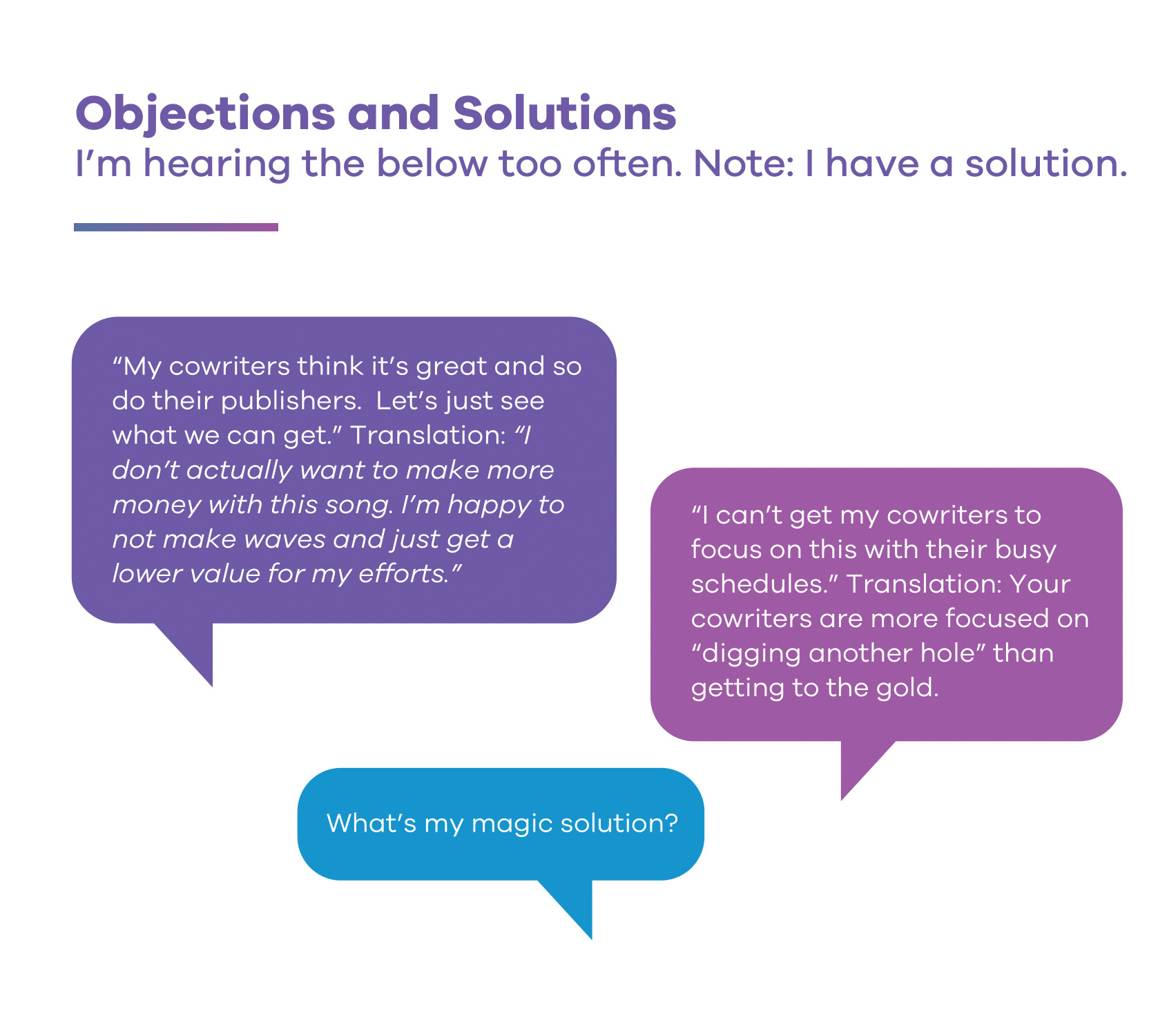
If you’re hearing the above type of excuses (which I abhor), then really – you know what you should do? Consider saying goodbye. That’s right. F them. It might be time to part ways with your co-writer, as it’s very likely that they are not on the same page and mindset for the 10% = 165X success.
They’re hindering and holding you back from your future success.
Think of them as a “90% type person.” Whereas you’re a 100% type.
Now, hopefully you can enroll them in this 10%=165X philosophy – so please share this article, if needed.
As a parting note: Please Please Please. We NEED the last 10% of song quality. This applies to the songs you’ve written where you’re close to a hit (what I call being “on top of the gold”)…this is NON-NEGOTIABLE. Please also understand that not every song you write will need this level of attention. If a song isn’t showing potential to be a hit, just document it, make a quick demo (if that) and move on.
Your next song might be the one where you’re “on top of the gold.”
In other words – it’s not necessary to polish and perfect a “B- ‘’ level song to get it to a “B+” in my opinion. The result is – it’s still a “B+” I mean you could. But really, we’re looking at taking our “A-” and “A” level songs to an “A+” – Does that make sense?
Ultimately, it’s up to you to shape your future and choose the path you wish to follow.
Your life’s work, the value you create, and your ultimate joy of life and what you can provide to the universe – and what the universe will provide to you – all comes down to the following.
Getting that last 10%. Getting that last 1%. Getting that last fraction of 1%.
So, please.
Get it – won’t you?
